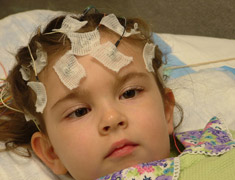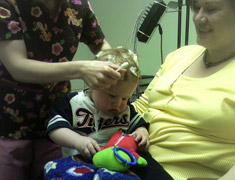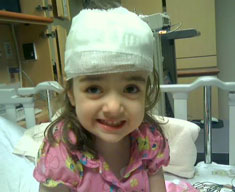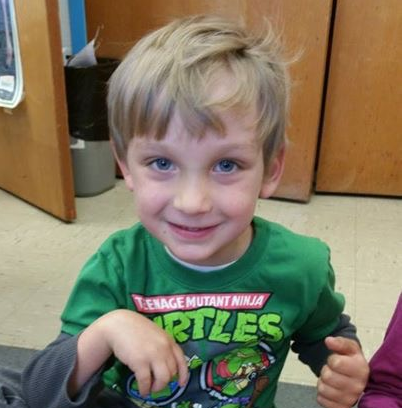Epilepsy is a seizure disorder. According to the Epilepsy Foundation of America, a seizure happens when a brief, strong surge of electrical activity affects part or all of the brain. Seizures can last from a few seconds to a few minutes. They can have different symptoms, too, from convulsions and loss of consciousness, to signs such as blank staring, lip smacking, or jerking movements of arms and legs.
Some people can have a seizure and yet not have epilepsy. For example, many young children have convulsions from fevers. Other types of seizures not classified as epilepsy include those caused by an imbalance of body fluids or chemicals or by alcohol or drug withdrawal. Thus, a single seizure does not mean that the person has epilepsy. Generally speaking, the diagnosis of epilepsy is made when a person has two or more unprovoked seizures.
Diagnosing Epilepsy
Diagnosing epilepsy is a multi-step process. According to the Epilepsy Foundation of America:
…the doctor’s main tool…is a careful medical history with as much information as possible about what the seizures looked like and what happened just before they began. The doctor will also perform a thorough physical examination, especially of the nervous system, as well as analysis of blood and other bodily fluids.
The doctor may also order an electroencephalograph (EEG) of the patient’s brain activity, which may show patterns that help the doctor decide whether or not someone has epilepsy. Other tests may also be used—such as the CT (computerized tomography) or MRI (magnetic resonance imaging)—in order to look for any growths, scars, or other physical conditions in the brain that may be causing the seizures. Which tests and how many of them are ordered may vary, depending on how much each test reveals.

Treatment of Epilepsy
Anti-epileptic medication is the most common treatment for epilepsy. According to the Epilepsy Foundation of America, medication is effective in stopping seizures in 70% of patients. When anti-epileptic medications are not effective in stopping a person’s seizures, other treatment options may be discussed. These include:
- surgery to remove the areas of the brain that are producing the seizures;
- stimulation of the vagus nerve (a large nerve in the neck), where short bursts of electrical energy are directed into the brain via the vagus nerve; and
- a ketogenic diet (one that is very high in fats and low in carbohydrates), which makes the body burn fat for energy instead of glucose.
According to the Epilepsy Foundation of America, 10% of new patients cannot bring their seizures disorder under control despite optimal medical management.
Epilepsy and School
It’s not unusual for seizures to interfere with a child’s development and learning. For example, if a student has the type of seizure characterized by periods of fixed staring, he or she is likely to miss parts of what the teacher is saying. If teachers—or other caregivers such as babysitters, daycare providers, preschool teachers, K-12 personnel—observe such an episode, it’s important that they document and report it promptly to parents (and the school nurse, if appropriate).
Because epilepsy can affect a child’s learning and development (even babies), families will want to learn more about the systems of help that are available. Much of that help comes from the nation’s special education law, the Individuals with Disabilities Education Act (IDEA), which makes available these two sets of services:
- Early intervention – A system of services to help infants and toddlers with disabilities (before their 3rd birthday) and their families.
- Special education and related services – Services available through the public school system for school-aged children, including preschoolers (ages 3-21).
In both of these systems, eligible children receive special services designed to address the developmental, functional, and educational needs resulting from their disability.
Special education and related services can be very helpful to children with epilepsy attending public school. Because the disorder affects memory and concentration, accommodations in the classroom and during testing are key to students’ academic success. Some common accommodations and services provided to students with epilepsy are listed at the end of this section.
Related services may be every bit as important for children with epilepsy, especially school health services and school nurse services—which can provide the child’s medication during school hours or give first aid instruction on seizure management to the student’s teachers, for example.
Depending on the child’s unique needs, other related services may also be necessary so that the student benefits from his or her special education program—for example, counseling services. Children and youth with epilepsy must deal with the psychological and social aspects of the condition. These include public misperceptions and fear of seizures, loss of self-control during the seizure episode, and compliance with medications. Counseling services may help students with epilepsy address the complexities of living with this disorder. The school can also help by providing epilepsy education programs for staff and students, including information on how to recognize a seizure and what to do if a seizure occurs.
It is important that the teachers and school staff are informed about the child’s condition, possible effects of medication, and what to do in case a seizure occurs at school. Most parents find that a friendly conversation with the teacher(s) at the beginning of the school year is the best way to handle the situation. Even if a child has seizures that are largely controlled by medication, it is still best to notify the school staff about the condition.
School personnel and the family should work together to monitor the effectiveness of medication as well as any side effects. If a child’s physical or intellectual skills seem to change, it is important to tell the doctor. There may also be hearing or perception problems caused by changes in the brain. Written observations of both the family and school staff will be helpful in discussions with the child’s doctor.
Your Child at School and Child Care – Epilepsy Foundation
 Epilepsy and Hemiplegia/Stroke Research
Epilepsy and Hemiplegia/Stroke Research
EEG and ischemic stroke in full-term newborns. June 2003. France. Selton, Andre, Hascoet. The purposes of this study were to describe EEG anomalies in unilateral neonatal ischemic stroke without hypoxic-ischemic encephalopathy, and to determine possible links between these abnormalities and long-term outcome.
Neuropsychiatric aspects of epilepsy in children. May 2003. Chicago.
Intractable epilepsy in vascular congenital hemiparesis: clinical features and surgical options, July 2002
Epilepsy associated with infantile hemiparesis: predictors of long-term evolution journal article 2001
High prevalence of antiphospholipid antibodies in children with epilepsy: a controlled study of 50 cases journal article 2001
 Other Resources
Other Resources
Talk About It! – A website dedicated to ending the stigma associated with epilepsy through “talking about it.”
About Epilepsy – Epilepsy Foundation
Epilepsy Foundation of Victoria
Neuropsychiatric aspects of epilepsy in children. April 2003. Indiana.
Clinical Trials in Pediatric Epilepsy
The Charlie Foundation – Offering hope through the ketogenic diet








